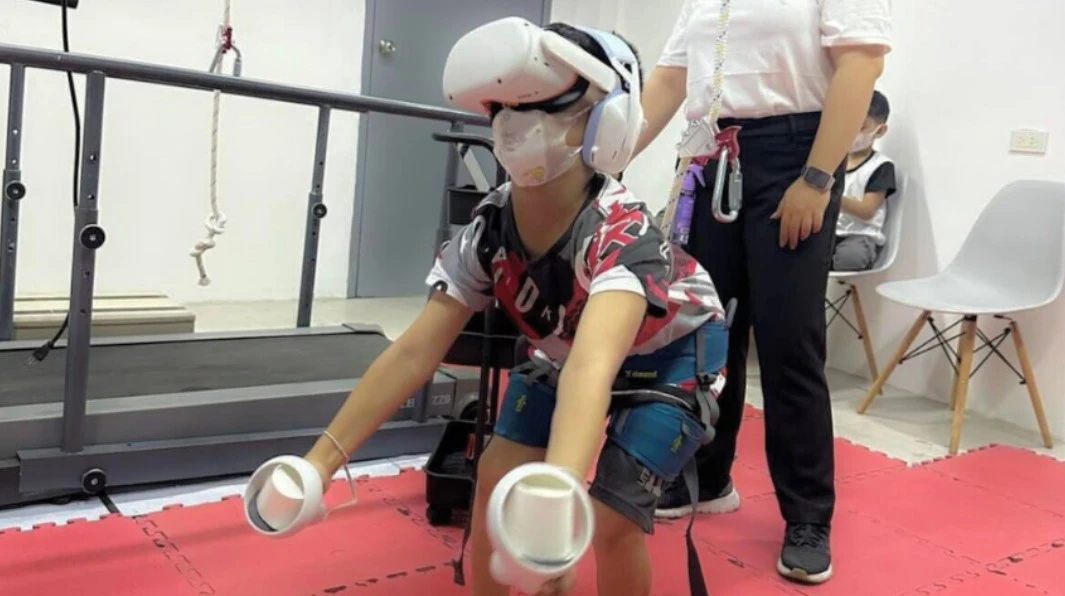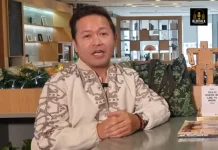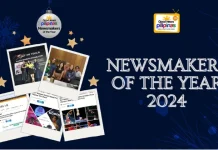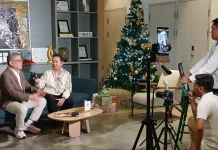
A multidisciplinary team from the University of the Philippines is developing a virtual reality (VR) game that turns therapy into play for patients with cerebral palsy and dementia. The system, known as the Immersive Gamification Technology System (ImGTS), combines physical and cognitive tasks in a safe, virtual environment to support mobility, memory, and overall quality of life.
With no current cure for dementia and cerebral palsy, the Immersive Gamification Technology System or ImGTS intends to assist patients with neurological conditions to recall memories, encourage physical activity, improve social interaction, enhance emotional well-being, and perform daily activities through interactive content and games to improve the quality of life of patients and caregivers.
Currently, pharmacologic management is limited to symptomatic treatment. Some of the treatments available include physical therapy, occupational therapy, speech and language therapy, and recreational therapy. The VR type of therapy promotes home therapy.
The research is composed of two parts. The first focuses on children with cerebral palsy. The second focuses on individuals with Alzheimer’s disease who exhibit behavioral and psychological symptoms of dementia.
The ImGTS will also be in charge of creating and customizing an interactive multimedia simulation of the virtual environment that utilizes the technology that augments human capability. It also has the power to create a flexible environment that provides a new experience while minimizing physical risks for patients.
Patients will be able to interact with games and content that would encourage physical activity and social activity while minimizing physical risks of being outside.
Read more on https://t.co/GbmrGgKyXi https://t.co/6DE74E3gqT
— Tiffany (@tiffany_glz) June 27, 2025
The technology encourages patients by immersing patients in a virtual environment where they can play. This form of treatment utilizes a VR game to improve walking, strength, and balance in patients with cerebral palsy and dementia.
“Immersive kasi inilalagay namin iyong bata sa isang kapaligiran na hindi talagang iyon ang kapaligiran niya, iyong virtual environment. Nakikilaro sa kanya kung ano man iyong nasa virtual environment na iyon (We call it immersive because the child is placed in a virtual environment that’s different from their real surroundings, where they can interact and play with the elements within that space),” Dr. Maria Eliza Aguila, project leader of ImGTS and a member of the UP Manila research group AXEL, explained.
She adds that it is gamified as it makes patients exercise without them noticing. “Halimbawa, habang nakatuon iyong gawain sa balance, ang alam niya, naghahagis siya ng ball, kumukuha siya ng bowling ball, hinahagis niya, tinatamaan niya iyong aliens, gano’n (For example, while the activity is really focused on improving balance, the child just thinks they’re throwing a ball—like picking up a bowling ball and hitting aliens with it),” she says.
UP Manila is the first in the country to create a VR game to help patients with neurological conditions.
Read more on https://t.co/GbmrGgKyXi https://t.co/6tUe1rc2JZ
— Tiffany (@tiffany_glz) June 27, 2025
Currently, three game modules are included. As for its future, plans of expanding both game offerings and overall system design are being targeted. UP aims to make ImGTS available and accessible to hospitals, clinics, and underserved areas that are not reached by therapists, with the vision of offering a fun, interactive, and scientifically proven tool that can improve the healthcare system.
Four projects will be integrated into the research to include various behavioral and psychological conditions. According to the UP Media and Public Relations Office. “The first phase will focus on the design and development of a semi-CAVE system for non-HMD (Head Mounted Display) users, a customized software VR solution, and training of healthcare professionals. The study will run for two and a half years. The second phase will focus on clinical trials and pre-clinical studies and will run for fifteen months.”
Prof. Gregg S. Lloren demonstrates a prototype of the advanced virtual reality therapy technology using whole-body motion tracking at the University of Edinburgh’s uCreate Makers Space in 2020. Photo from UP Cebu News, Research and Academics.
Read more in https://t.co/GbmrGgKyXi pic.twitter.com/SO2WAvg6XR
— Tiffany (@tiffany_glz) June 30, 2025
Currently, the project is still undergoing Phase 2 of clinical trials. The system has been tested by various medical professionals. “Medyo nakarami na kami ng pag-test. Nasubukan na ito ng mga ibang therapist, ibang doktor, ng ibang engineer, ibang computer scientist, ng mga batang may cerebral palsy, mga pamilya nila. Gusto namin pang palawigin yung pag-tetest para tiyak namin na talagang nakakabuti siya ng balanse, ng lakas, saka ng paglalakad,” Aguila emphasized.
(“We’ve already conducted several tests with various therapists, doctors, engineers, computer scientists, children with cerebral palsy, and their families. We want to expand the testing further to ensure that it truly improves balance, strength, and walking ability.”)
The Phase 1 study included patients experiencing dementia. VR headsets and a Semi-CAVE setup were used by the researchers. Patients during this phase had a neutral to positive experience, as little to no VR sickness was experienced. This supports that the technology is safe and user-friendly.
In a separate trial, children aged 6 to 12 with cerebral palsy exhibited improvements in motor function while describing the experience as enjoyable.
The project was developed under “AXEL (Augmented Experience E-health Laboratory) Virtual Care: Alagang Pinoy sa Makabagong Panahon,” a pioneering rehabilitation technology featuring tailored games, with a multidisciplinary team comprised of healthcare professionals, game developers, and computer scientists, that included faculty members from UP Manila College of Allied Medical Professions, College of Medicine, and UP Diliman College of Engineering.
Join our vibrant Good News Pilipinas community, where we celebrate the achievements of the Philippines and Filipinos worldwide! As the Philippines’ No. 1 Website for Good News and proud winners of the Gold Anvil Award and Lasallian Scholarum Award, we invite you to connect, engage, and share your inspiring stories with us. Together, let’s shine a spotlight on the stories that make every Filipino proud. Follow us on all platforms through our LinkTree. Let’s spread good news and positivity, one story at a time!










